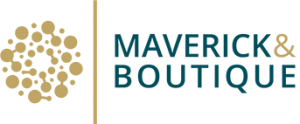By Abby Straus
A client once told me how stressed out she was by watching the news. “What’s preventing you from turning it off?” I asked. To which she replied, “I have to stay informed!” This began a conversation about whose script she was working from, hers or someone else’s. Her story went something like this: “If I don’t know about everything that’s going on in the world, I’ll appear uninformed, and people will think less of me.”
I asked what alternative story she might adopt that would support her in lowering stress, which was getting in the way of many things, including working well and enjoying her life. Initially, she was resistant, unable to get her head around the idea that there might be another story to tell.
But then a light went on. “Oh,” she said, “Do you mean that maybe it’s not true about me having to know everything? That I just made it up? Or somebody else made it up and I bought it? “Bingo!”, I said, and patted her on the back. “Now, let’s think up a better story.”
What’s your story? What are you telling yourself that’s keeping you from finding joy, and getting things done in a way that’s safe and sane? Here are some other popular, and equally destructive, stories you might have heard:
- I’m being selfish if I take time for myself.
- If I’m not busy all the time, I’m not getting anything done.
- If I don’t know the answer, I will look weak and stupid.
- I’m not enough. This one comes in many flavors: thin enough, rich enough, smart enough, sexy enough.
- I’ll be happy when… (you fill in the blank).
Wow! Who made this stuff up? Actually, it was me, aided, of course, by cultural messages and habits of thought we all pick up if we’re not paying attention. A big shift happened when I became aware of my stories and realized that I could replace them with better ones, like these:
- When I take time for myself, I’m happier, healthier, and have more to give others.
- I’m dropping “busy” from my vocabulary. I want to be productive, not busy!
- Genuine curiosity and willingness to learn are traits that I value and intend to model as a leader.
- I am enough. (This one is hard, and it helps to recognize that there are entire industries dedicated to convincing us otherwise via every form of media.)
- I’m looking for things to be happy about right now!
While we can’t control the stories other people tell, or the cultural fishbowl in which we swim, we can interrogate our own thinking. We can identify the narratives we run over and over, ask how they’re serving us; and, if they are not, we can replace them with ones that support us in living our best life.
What’s one story you tell yourself that isn’t serving you? What would you be able to do, and how would you feel, if you stopped telling this story? What new story might you tell that would support you in doing and feeling your best and owning your day?


